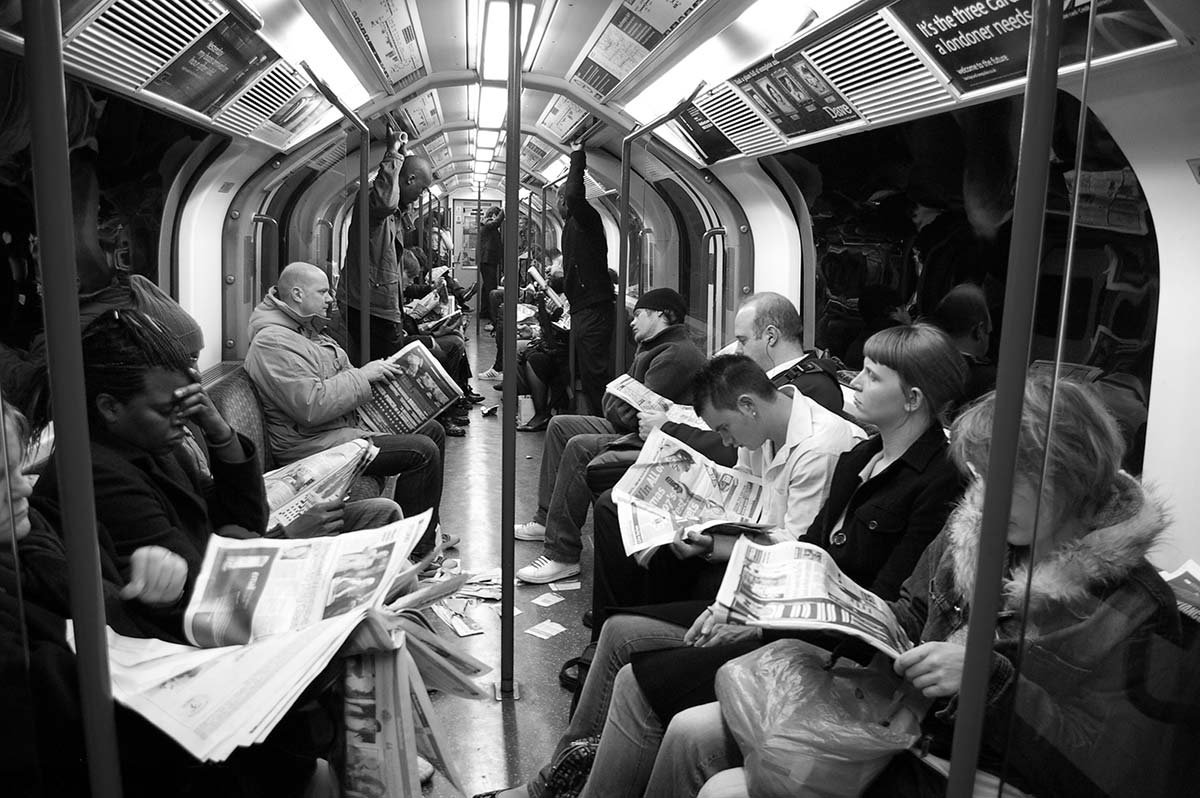Should we protect the commuter paper?

It wasn’t until I asked someone where I could get my hands on a physical copy of Time Out New York that I realized – nobody reads papers on the subway. Not a soul.
I asked this question to a few New Yorkers and they all had the same look of puzzlement. They knew a physical copy existed somewhere, but where or why I’d want it was beyond them.
Time Out remains an institution in London. It launched in 1968 and was made free in 2012 for weekly distribution on the London underground, where it is read by 1.1 million people every month. It’s now available in 315 cities and serves as a cultural bible for travelers and city dwellers all over the world.
Within London, the free newspapers and magazines are a staple of the commute:
- Metro (daily)
- Evening Standard (daily)
- Time Out (every Tuesday)
- Stylist (every Wednesday)
- Shortlist (every Thursday)
- Balance (monthly)
***
[Header photo: Peter Lawrence on Unsplash]
Get on the London underground during the commuter hours and it’s wall-to-wall faces in papers (and also phones – we’re not completely backward).
There is so much of the stuff that, in 2007, 9.5 tonnes of free papers were discarded on just 3 lines. Which is, of course, a bit of an environmental issue.
New York has experienced the same downsides – citing discarded subway papers as the cause of track fires, and identifying ‘hawkers’ (the people who hand out free papers outside stations) as a health and safety issue for causing congestion.
And so in 2016 New York banned hawkers on the subway and restricted their distribution to self-service stands.
Between 2013 and 2019, daily circulation figures for amNewYork, New York’s number one free paper, fell from 325,469 to 187, 421. Of course, this cannot be entirely attributable to the removal of hawkers, but it’s surely a factor.
The steady decline of print and its changing role in this digital era has been happening for some time now. In 2017 social media overtook print newspapers as the primary news source for Americans, as print struggled to compete with the speed and cost-effectiveness that digital channels are able to operate to.
But against this, ‘The Metro’, a free commuter paper in the UK, has risen in the rankings and now has the highest circulation figures of any paper in the UK. It sits comfortably in a world where we expect free news. And Hawkers are a key part of its distribution across the country.
It’s a paper people read on their way to and from work. Work is on their mind, but they have more thinking space and are less distracted. It’s an advertisers dream.
It’s a great opportunity for B2B brands to place ads and advertorial. And when you think of this within a wider channel mix, it could be used to increase the impact of more digital techniques.
78.5 % of podcasts are listened to on a commute – a placement in a commuter paper could reinforce your podcast or brand ad and improve recall.
So with that in mind, has New York lost a valuable marketing channel by creating such obstacles to distribution?
And in London, should we think more creatively about how we can use this channel and make sure we protect it?
***
[Header photo: Peter Lawrence on Unsplash]
